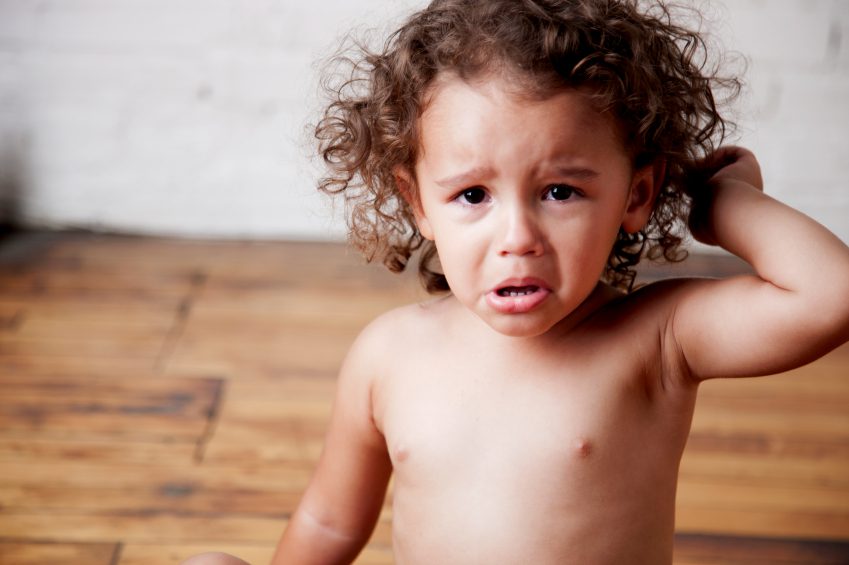Q+A: Should I be nervous? My preschooler’s teacher recommended I have him evaluated for an anxiety disorder..

Posted in: Grade School, Parenting Concerns, Pre-School, Stress
Topics: Anxiety, Child + Adolescent Development, Q+A
My 3-year-old son Justin has been in preschool for five months and he won’t stay unless I sit in the classroom with him. His teacher told me today that this isn’t fair to the other children and that I need to get him evaluated for an anxiety disorder. How concerned should I be about her recommendation?
Anxiety is a basic human emotion. Most children experience numerous worries, fears, and anxieties over the course of their development. One of the biggest challenges for psychologists when considering a diagnosis of an anxiety disorder is determining whether a child’s fear is typical or cause for concern. Certain fears tend to be more common at specific ages: fear of strangers is common from 6- to 9-months; fear of scary monsters at around 2-years-old; fear of the dark in 4-year-olds; and social fears in adolescents. Across all ages, children and adolescents tend to worry about their and their families’ well-being.
Age-appropriate fears – like being afraid of the dark at age four – generally don’t require clinical attention unless the fears are intense or continue longer than expected. If the fear starts to interfere with a child’s functioning – for example, going to sleep at night or attending school – intervention might be necessary.
Each anxiety disorder has different symptoms, but all the symptoms tend to cluster around frequent, irrational fear and dread. To meet the criteria for an anxiety disorder, the anxiety must last at least six months, so it’s not just the relatively brief type of anxiety that is caused by a stressful event (like transferring to a new school). When anxiety disorders are left untreated, they tend to become chronic conditions. This might be why Justin’s teacher is recommending a more thorough evaluation.
Defining and diagnosing anxiety disorders in children can be complicated, and most children who have one type of anxiety disorder will meet criteria for at least one other type of anxiety disorder at some point in time. For example, at age three, a patient of mine, Jennifer, couldn’t attend preschool because she couldn’t leave her mother’s side. Her struggles to separate from her mother were so severe that she couldn’t leave her for a moment without Jennifer having a melt-down. After six months of this, Jennifer’s mother consulted a psychologist who diagnosed Jennifer with Separation Anxiety Disorder. Jennifer received treatment for this to the point where she could attend kindergarten with relatively few difficulties, but during her kindergarten year she began to display symptoms of Obsessive Compulsive Disorder. She also presented as generally anxious much of the time, consistent with a diagnosis of Generalized Anxiety Disorder.
Jennifer’s difficulties aren’t as rare as you might think – about 6 to 15% of children will meet criteria for one or more anxiety disorders at some point in time. Kids with anxiety disorders also tend to experience other types of impairments, such as poor school performance, social difficulties, depression, or family dysfunction.
There is a lot of overlap between anxiety disorders, and children will typically meet criteria for more than one anxiety disorder. These disorders include:
- Separation Anxiety Disorder
- Generalized Anxiety Disorder
- Specific Phobia
- Social Anxiety Disorder
- Panic Disorder
- Obsessive Compulsive Disorder
- Post-Traumatic Stress Disorder
It can be difficult to determine which of these disorders is primary, partly because young children often don’t know they are anxious – they may just feel “bad” or be clingy, hyperactive, irritable, or sad. I frequently see children who have been labeled “oppositional” who are actually anxious, particularly when their “oppositionality” only occurs in new situations or after they have spent an enormous amount of energy holding their anxiety in check. For example, Joachim was a shy child within his first grade classroom who was able to keep his anxiety under control – at least until he got off the school bus. At that point he would cry, want things “just so,” and refuse to eat supper. Joachim was working so hard during to school day to not let his anxiety show that he was unable to control his symptoms when he arrived home.
I think Justin’s teacher did the right thing in recommending further treatment. A comprehensive evaluation followed by appropriate treatment could prevent further anxiety later in his development.


 Share
Share Tweet
Tweet





